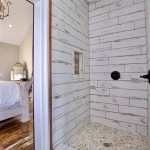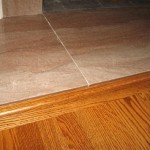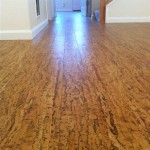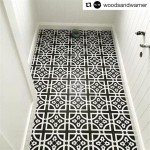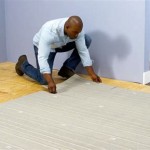How to Install Flooring Over Asbestos Tile
Asbestos floor tiles, commonly installed in homes built before the 1980s, pose a potential health risk if disturbed. The fibers can become airborne during removal or damage, leading to serious respiratory illnesses, including asbestosis, lung cancer, and mesothelioma. However, it is generally considered safe to leave asbestos tiles undisturbed and properly encapsulated. This article provides a detailed guide on how to install new flooring over existing asbestos tiles, minimizing the risk of fiber release and creating a safe and durable new surface.
Before proceeding with any flooring project involving asbestos tiles, it is crucial to accurately identify the presence of asbestos. Visual identification can be challenging, as asbestos tiles often resemble non-asbestos alternatives. Characteristics to look for include 9x9 inch tile sizes (a common indicator, though not definitive), black mastic adhesive, and installation dates prior to the 1980s. The most reliable method for confirming the presence of asbestos is to hire a certified asbestos testing service to collect samples and analyze them in a laboratory. Do not attempt to collect samples without proper training and equipment, as this can release asbestos fibers.
If testing confirms the presence of asbestos, it is essential to understand the regulations governing asbestos handling in your area. Federal, state, and local regulations often dictate specific procedures for asbestos abatement, disposal, and renovation activities. Some jurisdictions require permitting, licensed contractors, and specific containment measures. Failing to comply with these regulations can result in significant fines and legal repercussions. Research the applicable regulations before starting any work.
Assuming the asbestos tiles are in relatively good condition (undamaged, well-adhered, and not significantly deteriorated), installing new flooring over them is often a viable and cost-effective alternative to asbestos abatement. Encapsulating the tiles prevents the release of asbestos fibers and creates a barrier between the asbestos and the occupants. The key is to select the appropriate flooring type and installation method that minimizes disturbance to the existing tiles.
Key Point 1: Preparing the Asbestos Tile Surface
Proper preparation of the existing asbestos tile surface is paramount to ensure the successful adhesion and longevity of the new flooring. The goal is to create a clean, level, and stable base without disturbing the asbestos tiles.
Cleaning: Thoroughly clean the existing asbestos tiles using a HEPA-filtered vacuum to remove all loose debris, dirt, and dust. Avoid using wet cleaning methods, as excessive moisture can potentially weaken the adhesive holding the tiles in place. Pay particular attention to cracks, gaps, and edges where debris may accumulate.
Leveling: Addressing unevenness is crucial for a professional-looking and durable finished floor. Small imperfections can be filled with a self-leveling compound specifically designed for use over existing flooring. Follow the manufacturer's instructions carefully, ensuring proper mixing and application. For larger dips or uneven areas, consider using a patching compound or feather finish that can be applied in thin layers to gradually build up the surface. Allow the leveling compound to fully cure according to the manufacturer's recommendations before proceeding.
Encapsulation: Adding an additional layer of encapsulation is sometimes recommended, particularly if the existing tiles show signs of wear or damage. This can be achieved using a specialized encapsulant coating designed for asbestos abatement. These coatings create a durable, impermeable barrier that seals in any existing fibers. Apply the encapsulant according to the manufacturer's instructions, ensuring complete and even coverage.
Subfloor Considerations: Evaluate the existing subfloor for any signs of damage, such as rot, water stains, or structural weaknesses. Address any issues before installing the new flooring. Reinforce or replace damaged sections of the subfloor as needed to create a solid and stable foundation. Consider using a plywood or OSB underlayment to provide a smooth and consistent surface for the new flooring.
Testing for Adhesion: Before installing the new flooring, test the adhesion of the leveling compound and/or encapsulant in an inconspicuous area. Apply a small amount of the new flooring adhesive to the prepared surface and allow it to cure. Attempt to lift the adhesive, checking for proper bond strength. This test will help determine if the surface preparation is adequate and if the chosen adhesive is compatible with the existing materials.
Key Point 2: Selecting the Appropriate Flooring
The choice of new flooring is critical for a successful installation over asbestos tiles. The flooring should be durable, compatible with the prepared surface, and installed in a way that minimizes disturbance to the underlying asbestos tiles.
Floating Floors: Floating floors, such as laminate, engineered hardwood, and luxury vinyl plank (LVP), are generally considered the best options for installing over asbestos tiles. These floors are not directly adhered to the subfloor, instead relying on interlocking edges or click-lock systems. This minimizes the need for adhesives and fasteners that could disturb the asbestos tiles. Floating floors also allow for expansion and contraction, reducing the risk of cracking or buckling.
Sheet Vinyl: Sheet vinyl can be installed over asbestos tiles if properly prepared. However, it requires the use of a full-spread adhesive, which can potentially disturb the tiles. If using sheet vinyl, carefully select an adhesive specifically designed for use over existing flooring and follow the manufacturer's instructions meticulously.
Tile: Installing new ceramic or porcelain tile over asbestos tiles is generally not recommended. The process typically involves the use of thin-set mortar, which requires significant disturbance to the underlying surface to ensure proper adhesion. The weight of the tile can also place stress on the asbestos tiles, potentially causing them to crack and release fibers.
Carpet: Carpet can be installed over asbestos tiles, but it requires the use of tack strips or adhesive. Tack strips are nailed or glued around the perimeter of the room, which can disturb the asbestos tiles. If using adhesive, select a low-VOC adhesive designed for use over existing flooring. Consider using a thick, high-quality carpet pad to provide cushioning and minimize the need for aggressive stretching during installation.
Underlayment: Regardless of the chosen flooring type, consider using an underlayment to provide additional cushioning, sound insulation, and moisture protection. Select an underlayment that is compatible with the chosen flooring and that is specifically designed for use over existing flooring. Follow the manufacturer's instructions for installation.
Key Point 3: Minimizing Disturbance During Installation
Throughout the flooring installation process, it is essential to take precautions to minimize disturbance to the asbestos tiles and prevent the release of asbestos fibers.
Avoiding Fasteners: Limit the use of nails, screws, or other fasteners that could penetrate the asbestos tiles. Opt for adhesive-based installation methods whenever possible. If fasteners are unavoidable, pre-drill pilot holes to minimize the risk of cracking the tiles.
Gentle Handling: Handle the new flooring materials with care, avoiding dropping or dragging them across the asbestos tile surface. Use protective mats or boards to prevent damage to the existing tiles.
Adhesive Application: Apply adhesives sparingly and evenly to avoid saturating the underlying asbestos tiles. Follow the manufacturer's instructions for adhesive application rates and drying times.
Cutting Considerations: Cut flooring materials outside or in a well-ventilated area to minimize the accumulation of dust and debris. Use a sharp blade to ensure clean cuts and reduce the risk of tearing or splintering the material.
Waste Disposal: Dispose of all waste materials properly, following local regulations for asbestos-containing materials. Double-bag the waste in heavy-duty plastic bags and label them clearly as containing asbestos. Contact your local waste management authority for specific disposal instructions.
Personal Protective Equipment (PPE): Wear appropriate PPE throughout the installation process, including a NIOSH-approved respirator, disposable coveralls, and gloves. This will help protect you from potential exposure to asbestos fibers. Wash your hands thoroughly after completing the work.
Ventilation: Ensure adequate ventilation during the installation process by opening windows and using fans to circulate air. This will help reduce the concentration of any airborne fibers.
Installing flooring over asbestos tiles requires careful planning, meticulous preparation, and adherence to strict safety precautions. By following these guidelines, homeowners can safely and effectively encapsulate asbestos tiles, creating a beautiful and durable new floor while mitigating the risks associated with asbestos exposure. Consulting with a qualified flooring professional with experience in asbestos abatement can provide valuable guidance and ensure a successful project.

Installing Hardwood Over Asbestos Tiles Homeadvisor

How To Install Hardwood Flooring Over Asbestos Tiles 123

Can I Put A New Floor Over Asbestos Tiles Branch Environmental

Flooring That Can Be Installed Over Asbestos Tile

How To Install Tile Over Asbestos Ehow

Asbestos Floor Tiles 101 What To Know About This Old Home Hazard Bob Vila

How To Waterproof A Basement

How To Seal Asbestos Tiles Hunker

How Can I Easily Safely And Ly Cover Asbestos Flooring

Asbestos Encapsulation Flooring A Comprehensive Guide
Related Posts


